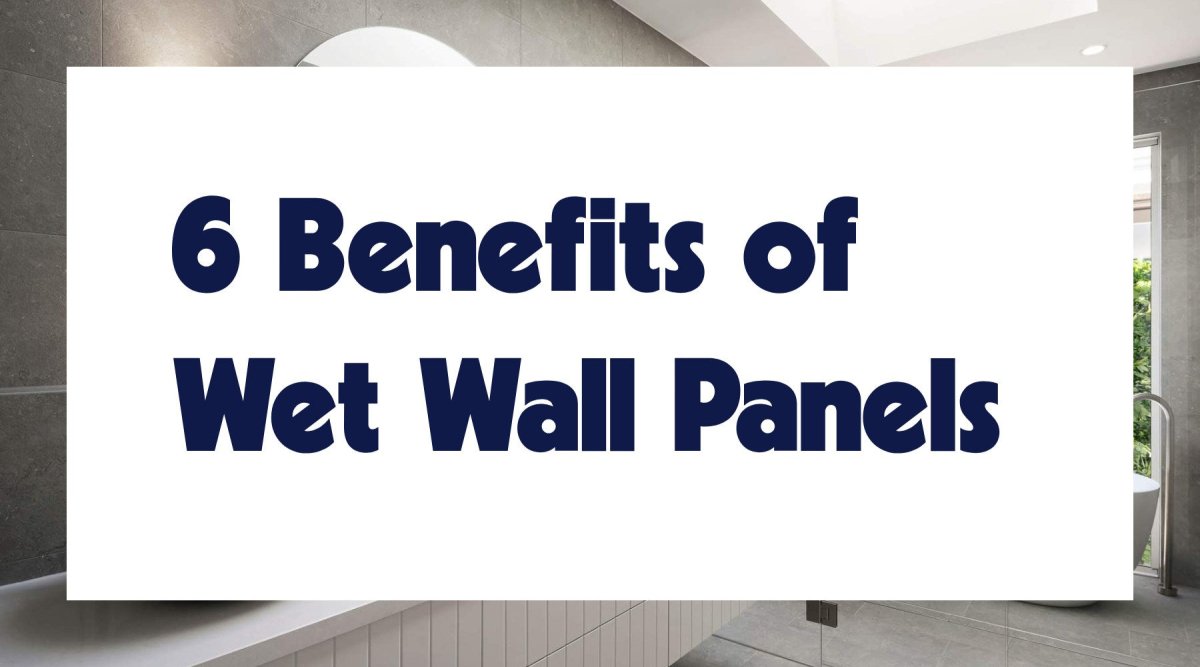One of the benefits of wet wall panels is that it's possible to install them yourself with pretty limited skills and tools. That being said, there are several things you should be aware of before you begin a project like this. We’re reviewing what you need to know if you’re considering DIY wall paneling.
Tools
Although you only need limited DIY skills to install your own bathroom wall panels, you do require certain tools. At the very least, you should have a proper cutting tool for trimming the panels.
The easiest way to cut shower wall panels accurately and efficiently is to use a circular saw on a track. However, this is a tool that many people don’t own. You can cut wall panels with a utility knife, but it’s more time-consuming and physically demanding.
Beyond a cutting tool, you’ll need safety goggles, a spirit level, a tape measure, and a silicone gun for adhesive and sealant. These affordable items are readily available at trade stores if you don’t already own them.
Measuring
One of the hardest parts of DIY wall paneling is measuring your space accurately. It’s easy to underestimate the difficulty of getting accurate measurements for an installation. The old adage of ‘measure twice, cut once’ exists for a reason.
If you struggle to measure your space confidently, please don’t hesitate to contact us. Send us pictures of the area and some general measurements, and we can help you refine them. You have to get thorough measurements of your remodel space before placing your panel order, so take some time to ensure you’re comfortable completing this step as a DIYer.
Cutting
PVC wall panels come in set sizes. You’ll likely have to trim them to fit in your space correctly. Like measuring, it’s easy to assume that cutting will be more straightforward than it is in reality. Have you used power tools before? How confident are you in your abilities to use them in a controlled and accurate way?
You need an appropriate cutting surface like a workbench to trim your wet wall panels to size safely. You’ll also have to make multiple fine cuts for any DIY wall panel that must fit into tight areas like small bathrooms. If you have the tools but lack experience, you can practice your cuts on some cheap sheet wood until you’re more confident.
Fixtures
If you’ve decorated a space like your bathroom before, you might have experience working around fixtures like your toilet, sink, or bathtub. When installing waterproof wall panels in your bathroom, you’ll have to cut the panels to allow plumbing access to the fixtures. You must also remove the fixtures to install the panels and replace them afterwards.
Suppose you’ve had enough practice with your cutting tools and are confident about your measuring abilities. In that case, you should be able to work around your fixtures reasonably quickly. Perhaps you could practice removing and re-installing any tricky fixtures in preparation for your panel project. This also allows you to get accurate measurements for the plumbing in your fixtures, streamlining your installation.
Shims
Have you used shims before? Shims are tapered wedges you may need to use to fill gaps between your wall panels and fixtures like bathtubs and windows. They create a level surface that supports the wall panel, allowing it to lie flush against the wall without damaging the permanent fixture.
It’s almost impossible for your bathroom walls and floors to be perfectly level and straight, meaning that using shims is inevitable. Wedging a shim into place between your wall panel and your windows, doorways, bathtubs, etc., may be the only way to ensure the surface is plumb and level.
Other Installation Methods
If you decide that a DIY wall panel project isn’t for you, there are other ways to get the job done. For example, we have an installer directory where you can find an installer close to you to handle the whole process. Alternatively, you can contact a carpenter or handyman in your area to get quotes for your wet wall panel installation.
While DIY wall paneling isn’t a mammoth renovation task, it can be intimidating to someone without much experience. If this is your first DIY project, you might want an extra pair of hands. However, if you’ve got some tools and a little know-how, installing your own PVC panels is easy. If you have any questions about wet wall panels, please don’t hesitate to contact us.





Leave a comment
This site is protected by hCaptcha and the hCaptcha Privacy Policy and Terms of Service apply.